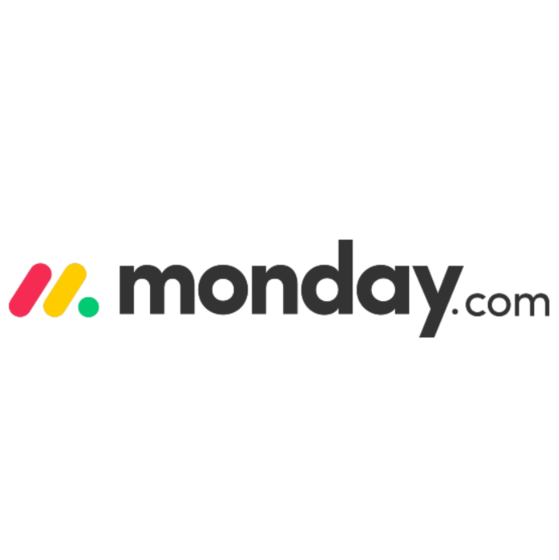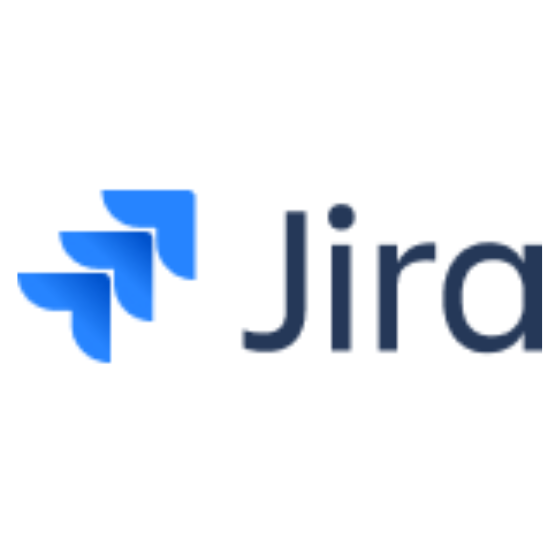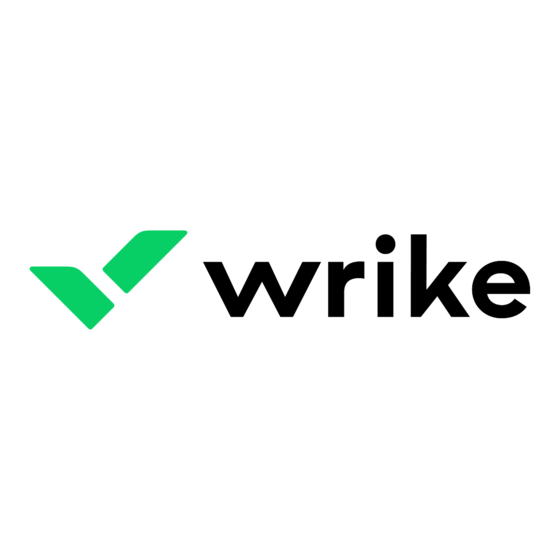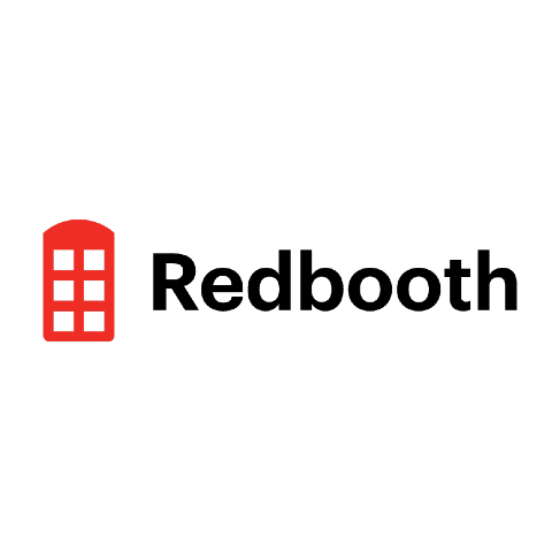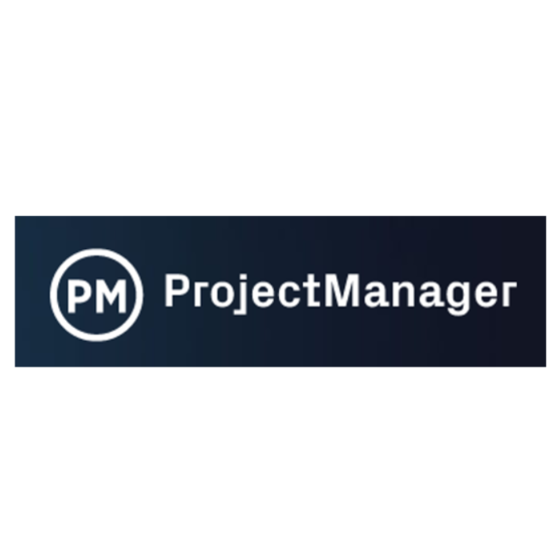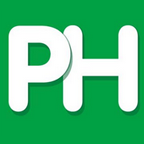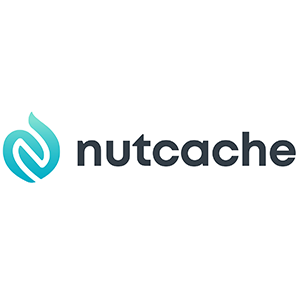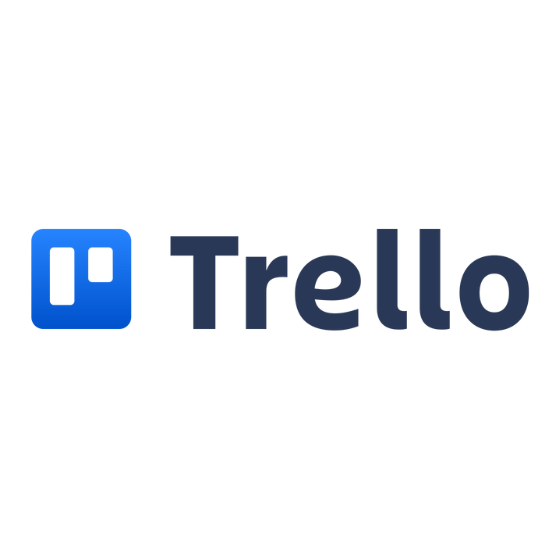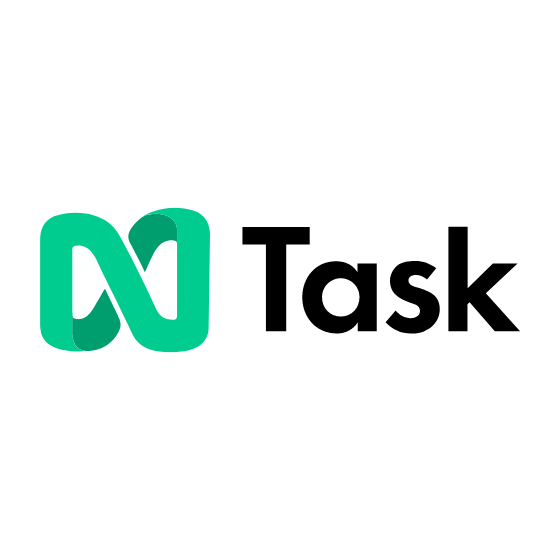10 Best Asana Alternatives Shortlist
Here's my pick of the 10 best software from the 20 tools reviewed.
There are seemingly countless alternatives to Asana’s project management software available, so figuring out which is best for you is tough. You want to plan, manage and control your projects better, but need to figure out which tool is the best fit. I've got you! In this post I make things simple, leveraging my experience managing big, complex projects, and using dozens of different PM tools to bring you this shortlist of the best project management software.
Why Trust Our Asana Alternatives Reviews
We’ve been testing and reviewing project management software since 2012. As project managers ourselves, we know how critical and difficult it is to make the right decision when selecting software.
We invest in deep research to help our audience make better software purchasing decisions. We’ve tested more than 2,000 tools for different project management use cases and written over 1,000 comprehensive software reviews. Learn how we stay transparent & our review methodology.
Best Asana Alternative Reviews Summary
| Tools | Price | |
|---|---|---|
| Wrike | $9.80/user/month min. 2 seats | Website |
| Freedcamp | From $1.49/user/month (billed annually) | Website |
| Redbooth | From $9/user/month (billed annually) | Website |
| ProjectManager.com | $16/user/month | Website |
| ProofHub | From $45/month (flat rate for unlimited users) | Website |
| Podio | From $9/user/month (billed annually). | Website |
| Adobe Workfront | Pricing for Adobe Workfront is not directly available on their website. | Website |
| nutcache | From $12.49 project-planning/user/month (billed annually) | Website |
| Trello | From $5/user/month (billed annually). | Website |
| nTask | From $3/user/month (billed annually). | Website |
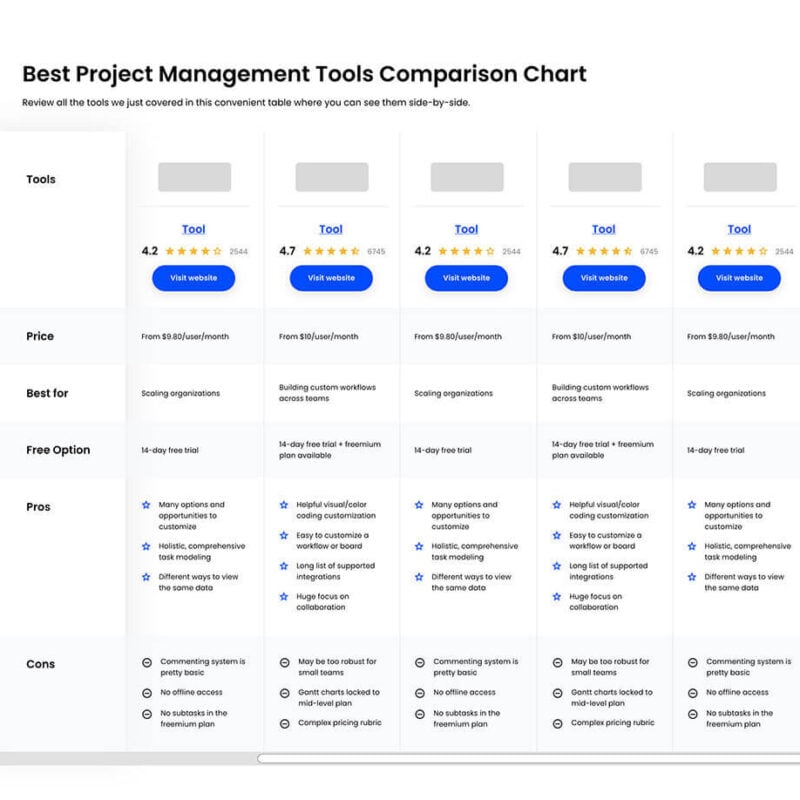
Compare Software Specs Side by Side
Use our comparison chart to review and evaluate software specs side-by-side.
Compare SoftwareHow To Choose an Alternative to Asana
With so many different project management software solutions available, it can be challenging to make decisions on what project management software is going to be the best fit for your needs.
As you're shortlisting, trialing, and selecting alternatives to Asana, consider the following:
- What problem are you trying to solve - Start by identifying the project management feature gap you're trying to fill to clarify the features and functionality the Asana alternative needs to provide. Consider specifically what Asana offers and how other options differ in feature sets or functionality to solve your needs.
- Who will need to use it - To evaluate cost and requirements, consider who'll be using the software and how many licenses you'll need. You'll need to evaluate if it'll just be the project management professionals, or the whole organization that will require access. When that's clear, it's worth considering if you're prioritizing ease of use for all, or speed for your project management software power users.
- What other tools it needs to work with - Clarify what tools you're replacing, what tools are staying, and the tools you'll need to integrate with, such as accounting, CRM or HR software. You'll need to decide if the tools will need to integrate together, or alternatively, if you can replace multiple tools with one consolidated project management tool.
- What outcomes are important - Consider the result that the software needs to deliver to be considered a success. Consider what capability you want to gain, or what you want to improve, and how you will be measuring success. For example, an outcome could be the ability to get greater visibility into performance. You could compare project management features until you’re blue in the face, but if you aren’t thinking about the outcomes you want to drive, you could be wasting a lot of valuable time.
- How it would work within your organization - Consider the software selection alongside your workflows and delivery methodology. Evaluate what's working well, and the areas that are causing issues that need to be addressed. Remember every business is different — don’t assume that because a tool is popular that it'll work in your organization.
Best Asana Alternative Reviews
Wrike is a project management and collaboration software designed to cater to businesses of all sizes. It offers a platform that combines work management and project management capabilities, allowing users to manage tasks, projects, schedules, and processes all in one place. It also excels in cross-team project visibility, allowing teams to collaborate and track progress in real-time.
Why it's a good Asana alternative: Wrike offers a more robust suite of project management tools that are particularly beneficial for larger teams or more complex projects. It provides detailed project planning features like interactive Gantt charts, which allow users to visualize project timelines and dependencies. Additionally, Wrike offers better integrations and more advanced customization options, enabling users to tailor workflows, dashboards, and reports to fit their specific requirements,
Standout features & integrations:
Features include dashboards, cross-tagging, automation, approvals, proofing, custom item types, project resource planning, Kanban boards, Gantt charts, and dynamic request forms.
Integrations include popular tools like Slack, Gmail, Google Drive, Bitbucket, BambooHR, Amazon S3, DocuSign, ADP Workforce Now, Stripe, Cisco, Expensify, Zendesk, and over 400 more.
Pros and cons
Pros:
- Many integrations available
- Easy-to-use task management
- Flexible project templates
Cons:
- Learning curve for new users
- Lack of in-platform chat option outside of third-party apps
Freedcamp is a versatile project management tool that focuses on task organization and collaboration, making it ideal for teams that revolve around task completion and deadlines. Its design centers on enhancing task visibility and management, which justifies its position as the best tool for task-centric teams where task tracking and completion are critical.
Why it's a good Asana alternative: I selected Freedcamp as a top Asana alternative for its exceptional task management capabilities, which cater specifically to teams prioritizing task execution and tracking. Its task-centric approach provides a streamlined experience for managing complex projects, setting it apart from Asana by offering a more focused and simplified task management solution.
Standout features & integrations:
Features include detailed task lists, Kanban boards for Agile project management, and a calendar view for deadline tracking.
Integrations include popular tools like Google Drive, Dropbox, Slack, Trello, Google Sheets, Google Forms, MailChimp, Asana, OneDrive, and GitHub.
Pros and cons
Pros:
- Intuitive design for easy adoption and use
- Affordable pricing structure for teams of all sizes
- Tailored features for superior task management
Cons:
- Can be too task-focused for projects needing broad feature sets
- Integrations may not cover all niche tools some teams use
- Limited advanced features for complex project planning
Redbooth stands out as a project management and collaboration platform, integrating high-definition (HD) video meetings directly within its workspace. This integration of video conferencing makes it the ideal choice for teams that rely heavily on visual communication and remote meetings, ensuring clarity and efficiency in discussions.
Why it's a good Asana alternative: I chose Redbooth for its standout HD video meeting capabilities, recognizing the growing need for high-quality remote communication in project management. This focus on integrating video conferencing sets it apart from Asana, offering a more immersive and effective way for teams to connect and collaborate, especially in a remote or hybrid work environment.
Standout features & integrations:
Features include intuitive task and project management tools, time tracking, timesheets, and the aforementioned HD video meetings.
Integrations include Google Drive, Box, Okta, Gmail, Chrome, Outlook, HubStaff, WebEx, Slack, and Dropbox.
Pros and cons
Pros:
- Flexible integrations with key productivity tools
- User-friendly interface for efficient task management
- Integrated HD video enhances remote team collaboration
Cons:
- Limited advanced project management features compared to some peers
- Smaller teams might find the cost per user a bit high
- Video-centric features may not suit all project types
ProjectManager is a comprehensive project management tool designed to support teams creating to-do lists, organizing tasks, managing resources, and tracking progress in real-time. It stands out for its ability to provide instant updates and live data, making it particularly effective for real-time project planning. This real-time aspect ensures that teams can make informed decisions quickly, adapting to changes and updates as they happen.
Why it's a good Asana alternative: I chose ProjectManager for this list because of its strong emphasis on real-time data and updates, which can be a game-changer for dynamic projects requiring immediate responses. Its focus on live information makes it best for environments in which plans evolve rapidly, distinguishing it from Asana and other tools that may not update as instantaneously.
Standout features & integrations:
Features include real-time dashboards, Gantt charts for detailed project planning, and workload management tools that help balance team capacities.
Integrations include Google Workspace, Microsoft Office, Microsoft Teams, Slack, Jira, Power BI, Acumatica, and Trello.
Pros and cons
Pros:
- User-friendly interface eases the learning curve
- Comprehensive integration options extend its functionality
- Real-time updates facilitate immediate decision-making
Cons:
- Real-time focus can be overwhelming for projects not requiring instant updates
- Minimum seat requirement might not suit very small teams or freelancers
- Higher starting price point may deter small teams
ProofHub offers a centralized platform for project management and team collaboration, emphasizing integrated proofing and review tools that streamline feedback and approval processes. This focus on simplifying review cycles positions it as the best choice for teams requiring efficient, collaborative review mechanisms within their project management suite.
Why it's a good Asana alternative: I included ProofHub in this list for its robust proofing and review features, which stand out by offering an easy way to manage feedback loops directly within the project management tool. This integrated approach to proofing is particularly valuable for creative teams and agencies, setting it apart from Asana, where external tools might be needed for similar functionality.
Standout features & integrations:
Features include markup tools for easy feedback on document management and designs, custom workflows for streamlined processes, and a built-in time tracker to monitor project hours.
Integrations include popular apps like Google Drive, Dropbox, iCal, OneDrive, Freshbooks, Quickbooks, Google Calendar, and Box.
Pros and cons
Pros:
- Custom workflows adapt to various project needs
- Flat-rate pricing offers great value for large teams
- Integrated proofing tools streamline review processes
Cons:
- Interface may have a steeper learning curve for new users
- Limited third-party integrations compared to some competitors
- Flat pricing may be expensive for very small teams
Podio offers a flexible and highly customizable platform for task management, project collaboration, and workflow automation. Its strength lies in the ability to tailor workspaces, apps, and workflows to meet the specific needs of any team or project, making it the go-to choice for businesses seeking personalized project management solutions.
Why it's a good Asana alternative: I chose Podio for its unparalleled customization options, which allow for the creation of bespoke workflows and tools tailored to the unique processes of each team. This level of customization provides a distinct advantage over Asana, especially for teams with specialized or non-standard project management needs.
Standout features & integrations:
Features include its customizable apps and workspaces, automated workflows, and task management capabilities that adapt to various project requirements.
Integrations include ShareFile, Google Drive, Microsoft Excel, Dropbox, and GoToMeeting.
Pros and cons
Pros:
- Scalable platform grows with your team and projects
- Broad integration capabilities enhance workflow efficiency
- High level of customization tailors to specific project needs
Cons:
- Advanced features and integrations are tiered, potentially increasing costs
- May require a learning curve to fully leverage customization
- Initial setup and customization can be time-consuming
Workfront offers a comprehensive enterprise work management platform, designed to support complex workflows, resource management, and collaboration at scale. Its robust feature set and flexibility make it an ideal solution for large organizations seeking to streamline operations, enhance productivity, and maintain visibility across extensive project portfolio management.
Why it's a good Asana alternative: I picked Workfront for its extensive capabilities in managing the multifaceted needs of large enterprises, which often involve intricate projects and numerous stakeholders. Its enterprise-grade features provide a level of depth and scalability that stands out from Asana, making it best suited for organizations with complex workflows and high demands for customization and integration.
Standout features & integrations:
Features include advanced project and resource management, customizable dashboards, and real-time reporting.
Integrations include Adobe Creative Cloud, G Suite, Outlook, Microsoft Teams, Slack, Salesforce, and JIRA.
Pros and cons
Pros:
- Comprehensive reporting and analytics for informed decision-making
- High customization and integration capabilities
- Scalable for large enterprises with complex needs
Cons:
- Setup and onboarding can be time-consuming
- May be more complex than needed for smaller teams
- Pricing transparency could be improved
Nutcache provides an all-encompassing project management solution with a strong emphasis on agile methodologies and time tracking. It caters to teams looking to implement agile frameworks such as Scrum or Kanban, offering tools that support iterative cycles, backlog management, and sprint planning, making it the optimal choice for organizations embracing agile project planning.
Why it's a good Asana alternative: I included Nutcache on this list for its dedicated focus on agile project planning, which is particularly beneficial for teams employing Scrum or Kanban methodologies. Its specialized agile features offer a structured yet flexible approach to project management, setting it apart from Asana by catering specifically to the needs of agile teams.
Standout features & integrations:
Features include robust agile boards, time-tracking capabilities, and collaborative project planning features.
Integrations include major payment gateways like PayPal and Stripe, as well as 2Checkout, QuickBooks Online, Gmail, Google Drive, Slack, GitHub, and Dynacom Accounting.
Pros and cons
Pros:
- Direct invoicing and payment gateway integrations streamline billing
- Integrated time tracking enhances task and project management
- Agile-specific features support Scrum and Kanban methodologies
Cons:
- The learning curve for teams new to agile methodologies
- Limited integrations with other third-party tools
- Focus on agile may limit use for non-agile teams
Trello revolutionizes project management with its visually intuitive boards, lists, and cards, making it the go-to tool for teams that value visual organization and tracking. Its simplicity and visual appeal justify its acclaim as the best tool for visually tracking project milestones, offering an immediate, easy-to-use, and clear view of project progress and tasks with their respective due dates.
Why it's a good Asana alternative: I chose Trello for its unmatched visual interface, which turns project management into a highly visual and interactive experience. This emphasis on visualization makes it ideal for teams that benefit from seeing tasks and projects laid out in a clear, graphical manner, differentiating it from Asana's more list-centric approach.
Standout features & integrations:
Features include customizable boards, drag-and-drop functionality, and color-coded labels for easy organization.
Integrations include Slack, Google Drive, Dropbox, and a wide array of productivity tools, including Hubstaff, TimeDoctor, PomoDone, JIRA Cloud, Hootsuite, Disbug, and SupportBee.
Pros and cons
Pros:
- Wide range of integrations with popular tools
- Flexible board customization caters to various project types
- A highly visual interface simplifies project tracking
Cons:
- Can become cluttered with extensive project boards
- Limited reporting features compared to some alternatives
- May lack depth for complex project management needs
nTask is a comprehensive project management tool that integrates risk management features directly within its platform, making it unique. It's designed for teams that prioritize risk assessment and mitigation in their projects, offering tools to identify, track, and manage risks effectively, thereby positioning itself as the best tool for projects where risk management is a key concern.
Why it's a good Asana alternative: I chose nTask for its integrated risk management capabilities, which are essential for projects in high-stakes environments. This focus on risk assessment and mitigation sets it apart from Asana, providing a specialized solution for teams that require detailed risk analysis and management as part of their project planning process.
Standout features & integrations:
Features include a risk management module, task management, and time-tracking functionalities.
Integrations include popular tools such as Slack, Zoom, Google Calendar, Apple Calendar, Microsoft Teams, and Microsoft Outlook.
Pros and cons
Pros:
- User-friendly interface facilitates easy adoption
- Affordable pricing makes it accessible for all team sizes
- Integrated risk management streamlines project planning
Cons:
- Focused on risk management, which may not suit all projects
- Fewer integrations compared to some larger platforms
- Limited advanced features for complex project needs
Other Asana Alternatives
Below is a list of additional Asana alternative software that I shortlisted, but did not make it to the top 12. Definitely worth checking them out.
- Scoro
Best for comprehensive business management
- Smartsheet
Best for spreadsheet-like project management
- Hive
Best for AI-driven analytics
- Zoho Projects
Good for integration with business apps
- Teamwork.com
Good for client work management
- Assembla
Good for software development teams
- Airtable
Good for database-driven projects
- ClickUp
Good for all-in-one productivity
- Zenkit
Good for data visualization tools
- Basecamp
Good for streamlined team communication
Related Project Management Software Reviews
If you still haven't found what you're looking for here, check out these other related tools that we've tested and evaluated:
- Project Management Software
- Resource Management Software
- Task Management Software
- Gantt Chart Maker
- Project Tracking Software
- Project Scheduling Software
What Is Asana?
Asana is a web and mobile application designed to help teams organize, track, and manage their work. It is widely used by professionals across various industries, including technology, marketing, and project management, to streamline collaboration and enhance productivity. Businesses use this software to plan projects, assign tasks, set deadlines, and monitor progress in real time. Features like task assignments, project timelines, and progress tracking support the efficient management of projects, facilitating clear communication and ensuring that teams are aligned with their goals. These capabilities make Asana an invaluable tool for companies looking to optimize workflow, improve team coordination, and achieve project success with greater ease and efficiency.
Asana’s Criticism
Asana is widely appreciated for its comprehensive project management features and user-friendly interface, but it also faces criticism for certain aspects that can detract from its overall effectiveness. Here are 5 things that users typically criticize Asana for:
- Complexity for New Users: The extensive features and customization options can overwhelm new users, making the learning curve steeper than expected.
- Limited Free Version: The free tier offers limited functionality, compelling small teams or individual users to upgrade to premium plans for fuller access to its capabilities.
- Notification Overload: Users often report receiving too many notifications, which can be distracting and counterproductive without proper configuration.
- Performance Issues with Large Projects: Asana can sometimes slow down or become less responsive when handling large projects with many tasks and users.
- Integration Limitations: While Asana integrates with many tools, some users find the integration capabilities limited or cumbersome, affecting their workflow efficiency.
Why Look for an Asana Alternative?
You might be looking for an alternative to Asana if you:
- Find the platform too complex and are seeking a more intuitive or simpler tool for project management.
- Need more features in the free version that Asana's free tier does not offer.
- Want to reduce the volume of notifications and are looking for a tool with more customizable notification settings.
- Are managing large projects and need a tool that performs better under heavy loads without slowing down.
- Require deeper or more seamless integrations with other tools and software that Asana does not support effectively.
By addressing these issues, alternatives can provide a user experience that aligns more closely with the unique needs and preferences of different teams and projects, offering solutions where Asana might fall short.
Selection Criteria for Asana Alternatives
Selecting Asana alternatives involves a careful evaluation of how different project management platforms cater to the functional needs and specific use cases crucial for teams to organize, track, and manage their work efficiently. In my approach, I've personally tested and researched various platforms, focusing on those that excel in functionality and can meet diverse business needs. During this process, I formed a set of selection criteria to help me determine which tools met my standards, with each criterion weighted to reflect its importance to my overall assessment.
Core Project Management Software Functionality (25% of total weighting score): To be considered for inclusion on my list of the best alternatives to Asana, the solution had to support the ability to fulfill common use cases:
- Task assignment and prioritization
- Project timeline and deadline management
- Collaboration and communication tools for team members
- Integration with other business tools (e.g., email, calendar, file storage)
- Reporting and analytics for project performance and progress
Differences from Asana (25% of total weighting score): While Asana sets a high standard for project management software, looking for alternatives that offer unique or superior features can provide tailored solutions for specific organizational needs. This evaluation focuses on identifying functionalities that distinguish a platform from Asana, such as advanced customization, industry-specific solutions, or superior analytics. I look for:
- Advanced customization options that allow for a more tailored user experience.
- In-depth reporting and analytics capabilities for better decision-making.
- Integrated time tracking and invoicing for streamlined billing processes.
- Platforms offering dedicated customer support and training resources.
- Industry-specific solutions that address unique challenges.
Usability (10% of total weighting score): A powerful tool is only as good as its usability; the best project management software must balance complexity with intuitive design. This criterion assesses how user-friendly the interface is, ensuring that the platform can be efficiently used by all team members without a steep learning curve. This involves looking for:
- Intuitive design and user interface that allow new users to navigate the platform with minimal guidance.
- A balance between advanced features and maintaining a clean, uncluttered user experience.
- Customization options that let users tailor the interface to their specific needs without overwhelming complexity.
Onboarding (10% of total weighting score): The initial setup and onboarding process can greatly influence the speed at which a team can start realizing value from a new tool. This evaluation looks for platforms that provide comprehensive onboarding resources to facilitate quick and easy adoption. Criteria include:
- Comprehensive training materials such as videos, templates, and interactive product tours.
- Availability of support resources, including chatbots, live chat support, and webinars to assist new users.
- A straightforward setup process that allows teams to quickly migrate their existing projects and workflows into the new tool.
Customer Support (10% of total weighting score): Responsive and helpful customer support is crucial for resolving issues and ensuring smooth operation. This criterion examines the availability and quality of support provided by the platform, focusing on:
- The availability of multiple support channels, including email, phone, and live chat.
- Response times and the quality of support provided in resolving issues.
- Access to a knowledge base or community forum where users can find answers and share insights.
Value For Money (10% of total weighting score): Investing in project management software should yield a positive return in terms of improved efficiency and productivity. This evaluation compares the cost of each platform against the features and benefits it offers, looking for options that provide the best value for money. This involves:
- Comparing subscription plans and pricing against the features and capabilities offered.
- Considering the scalability of pricing plans to accommodate growing teams and projects.
- Evaluating any hidden costs, such as additional charges for integrations or premium support.
Customer Reviews (10% of total weighting score): Customer reviews offer real-world insights into how software performs and the benefits it brings to teams and organizations. This criterion considers user feedback to gauge satisfaction, reliability, and the overall effectiveness of the platform in meeting project management needs. Customer reviews are analyzed for:
- Overall satisfaction with the tool's performance and reliability.
- Specific feedback on the tool's ease of use, feature set, and customer support quality.
- User experiences with onboarding, especially in terms of ease and effectiveness.
This approach to selecting alternatives to Asana emphasizes matching functional capabilities and specific use cases with the unique needs of users and organizations. It's about finding a platform that not only offers a comprehensive set of project management features, but also excels in areas like usability, onboarding, and customer support to provide a solution that teams will adopt and benefit from in their day-to-day operations.
Trends In Project Management Software For 2024
Project management software has continued to evolve rapidly in 2024, reflecting the changing needs of teams and organizations striving for efficiency in managing their projects. Innovations in this space are reflective of a broader trend towards creating more adaptive, secure, and user-centered tools. I have identified several key trends, described here, that I believe will influence both project management software and the project management field in general both now and in the future.
Trends in Project Management Software
- Emphasis on Mental Health and Well-being: Recognizing the impact of work on mental health, project management tools are incorporating features aimed at promoting well-being. This includes functionalities like workload balancing to prevent burnout, reminders for breaks, and integration with wellness apps. The trend underscores the growing awareness of the importance of mental health in the workplace.
- Sustainability and Eco-conscious Features: With a global shift towards sustainability, project management tools are introducing features that help teams track and manage their environmental impact. This includes carbon footprint calculators for projects, sustainability reporting, and resources for planning eco-friendly initiatives. It reflects the increasing demand for tools that not only assist in project management but also support broader environmental goals.
- Greater Focus on Security and Compliance: As cyber threats evolve, there's an increased emphasis on enhancing security measures within project management software. Features like advanced encryption, two-factor authentication, and compliance with international data protection regulations are becoming standard. This trend addresses the critical need for secure management of sensitive project data.
- Adoption of Blockchain Technology: Some project management tools are beginning to explore the use of blockchain technology for tasks such as secure document sharing, smart contracts for freelancers, and transparent task tracking. This innovative approach promises enhanced security, transparency, and efficiency in project management processes.
- Virtual and Augmented Reality for Project Visualization: The use of VR and AR technologies for project planning and visualization is on the rise. These technologies enable immersive presentations of project plans, virtual site tours, and interactive models for stakeholder engagement. This trend caters to the need for more dynamic and engaging project visualization techniques.
Specific Trends Related to Asana
- Advanced Reporting and Analytics: Asana has introduced more sophisticated reporting tools, enabling deeper insights into project performance and team productivity. This reflects the growing demand for data-driven decision-making in project management.
- Improved Task Automation: The platform has enhanced its automation capabilities, allowing users to create custom workflows that automatically update tasks and projects based on specific triggers. This trend towards automation aims to save time and reduce manual effort in project management processes.
- Expansion of Template Library: Asana has significantly expanded its range of project and task templates, catering to a wider variety of industries and project types. This trend acknowledges the importance of quick and easy project setup, tailored to specific use cases.
As teams and organizations continue to navigate the complexities of project management, the technology that supports them must adapt to meet their evolving needs. The developments in Asana and other leading project management tools reflect an industry-wide effort to provide solutions that are not only powerful in functionality, but also intuitive and accessible for users across different sectors.
Features of Project Management Software
Project management software, whether Asana or its alternatives, plays a crucial role in the way teams organize, track, and manage their work tasks and projects. It ensures that projects are completed within the stipulated time and budget while enhancing overall productivity and efficiency. Here, I detail some of the key features to consider when selecting project management software.
- Task Management: This feature allows users to create, assign, and track tasks through to completion. It's vital for ensuring that all team members understand their responsibilities and deadlines, fostering a clear path towards project goals.
- Collaboration Tools: Facilitates team communication and collaboration on project tasks directly within the software. This feature eliminates the need for external communication tools and centralizes discussions, improving teamwork and project coherence.
- Time Tracking: Enables the recording of the amount of time spent on each task or project. This feature is important for billing clients accurately, estimating future projects, and understanding team productivity.
- File Sharing and Management: Allows team members to upload, share, and manage files relevant to the project in a single location. It ensures that everyone has access to the latest versions of documents, reducing confusion and errors.
- Project Planning and Scheduling: Provides tools for planning projects, setting timelines, and scheduling tasks. This feature helps in visualizing the project timeline, ensuring that the project stays on track and deadlines are met.
- Resource Management: Helps in allocating and managing resources, including team members' time and project budgets. Effective resource management ensures that projects are completed within budget and resources are utilized efficiently.
- Reporting and Analytics: Generates reports and analytics on various aspects of the project, such as progress, resource allocation, and budget status. This feature aids in making informed decisions and identifying areas for improvement.
- Integration Capabilities: Supports integration with other tools and software used by the organization. This feature ensures seamless workflow and data synchronization across platforms, enhancing productivity and reducing manual data entry.
- Mobile Access: Provides a mobile app or mobile-friendly web version of the software. This feature allows team members to access project information and perform tasks on the go, increasing flexibility and responsiveness.
- Customization and Scalability: Offers customization options and can scale with the growth of the team or project. This feature ensures that the software continues to meet the team's needs as projects become more complex and the team expands.
The right project management software can transform the way teams work, leading to improved productivity, better communication, and successful project completion. It's about choosing a solution that not only meets your current needs, but that also grows with the team, providing lasting value and support through the challenges of project management.
Benefits of Asana Alternatives
Project management software has become an indispensable tool for many businesses and teams looking to streamline their processes and enhance productivity. While Asana is a popular choice, there are also numerous other software options available, each offering unique benefits. Exploring alternatives to Asana can uncover features that may better suit specific needs or preferences of users and organizations. Here are five potential benefits of using an alternative to Asana:
- Advanced Customization Options: Provides a high level of personalization for projects and workflows. This benefit allows businesses to tailor the software extensively to their specific processes and methodologies, enhancing the user experience and ensuring that the software adapts to the business, not the other way around.
- In-depth Reporting and Analytics: Offers comprehensive data analysis tools. By using software with robust reporting capabilities, organizations can gain deeper insights into project performance, team productivity, and financial metrics, enabling more informed decision-making and strategic planning.
- Integrated Time Tracking and Invoicing: Combines task management with financial tools. This feature benefits freelancers and agencies by streamlining the billing process, ensuring accurate invoicing based on actual time spent on tasks, and reducing administrative overhead.
- Dedicated Customer Support and Training: Provides extensive support and training resources. Access to high-quality customer service and thorough training materials ensures that users can maximize the software's potential, leading to quicker adoption and fewer disruptions to workflow.
- Industry-Specific Solutions: Tailored to meet the unique needs of specific sectors. For businesses in fields like construction, software development, or healthcare, using project management software designed with industry-specific features can drastically improve project outcomes by addressing the unique challenges and requirements of those sectors.
These benefits highlight the importance of considering a range of software options to enhance project management practices, drive efficiency, and support strategic business goals. Finding the right fit can significantly impact the success of projects and the overall productivity of teams.
Costs & Pricing For Asana Alternatives
With a plethora of Asana alternatives available, each offering various features and pricing plans, it's crucial to understand what each plan offers to ensure it meets your specific needs. Typically, project management software providers offer a range of plans from free versions with basic functionalities to more advanced, premium options tailored for larger teams or complex projects. No matter if you are looking for a more cost-effective alternative or if you just want different alternatives, it is important to explore all your options to ensure that you find the best option for your business.
Here's a simplified overview of common plan types, their average prices, and the features typically included, compared against Asana’s pricing and plans for reference.
Plan Comparison Table for Asana Alternatives
| Plan Type | Average Price | Common Features | Asana Plan | Asana Specific Features |
| Free | $0 | Basic task management, limited users, basic collaboration tools | Basic | Unlimited tasks, projects, and messages; basic integrations |
| Basic | $5-10/user/month | Task and project tracking, calendar views, some integration capabilities | N/A | N/A |
| Standard | $10-25/user/month | Enhanced reporting, advanced integrations, unlimited projects, guest access | Premium | Timeline, advanced search & reporting, custom fields, unlimited dashboards |
| Premium | $25-50/user/month | Resource management, time tracking, advanced analytics, priority support | Business | Portfolios, workload, forms, automation, advanced integrations |
| Enterprise | Custom pricing | Custom integrations, advanced security features, personalized training, 24/7 support | Enterprise | SAML, user provisioning & deprovisioning, data export & deletion, custom branding |
Asana's offerings align with typical pricing structures, but with specific features that cater to various organizational needs at each level.
Overall, when choosing a plan, it is important to consider not just the cost, but the specific functionalities each plan provides. This will ensure that your team has the tools it needs to be successful without paying for unnecessary extras. The right project management solution will balance affordability with the features your team needs to efficiently manage its projects and tasks.
Asana Alternatives Frequently Asked Questions
What are the benefits of using Asana?
Asana helps teams streamline task management, improve collaboration, ensure clear communication, offer flexibility with multiple project views (like lists, boards, and timelines), and provide integration options with other tools, enhancing overall productivity and project transparency.
How much does Asana cost compared to its alternatives?
Asana’s pricing starts with a basic free plan, with premium features available from $10.99 per user/month when billed annually. Alternatives range from free versions with limited capabilities to more advanced enterprise solutions that can exceed $30 per user/month.
What are the pricing models for Asana and its alternatives?
Most project management tools, including Asana, offer a subscription-based pricing model, typically charged per user per month. Annual billing often comes with a discount. Enterprise or custom plans may be priced based on specific needs and scale.
What is the typical range of pricing for Asana alternatives?
The pricing for Asana alternatives can start at $0 for basic or free plans and can go up to $30 or more per user/month for premium or enterprise features. The exact cost often depends on the depth of functionality and the scale of use.
Which is the cheapest Asana alternative?
Trello and Freedcamp offer free plans with basic functionalities, making them some of the cheapest options available for small teams or individual users looking to manage projects efficiently.
Which Asana alternative is the most expensive?
Enterprise versions of tools like Workfront or Monday.com can become the most expensive options, especially when customized features, advanced security, and premium support are required.
Are there any free tools that can be considered Asana alternatives?
Yes, several Asana alternatives offer free plans, including Trello, Freedcamp, and nTask. These free versions are great for individuals or small teams, though they may lack some of the advanced features found in paid plans.
Other Project Management-Related Reviews
What do you think?
I hope this guide helps you find the right Asana alternative for your needs. If you know of a tool that should be on this list or have experiences to share, feel free to suggest and discuss. Your insights could greatly help others in their search for the ideal project management solution.
If you want to keep informed of more alternatives content, software comparisons, and other PM topics, subscribe to the Insiders Newsletter now.


